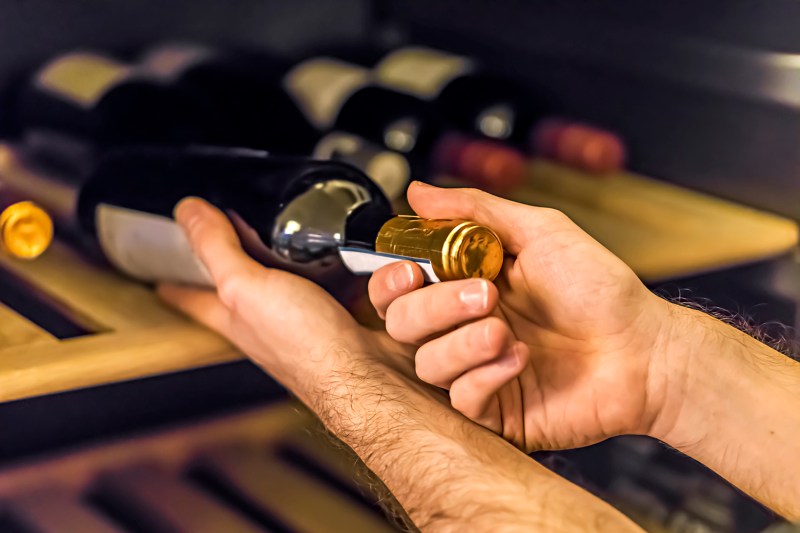
We can’t all have wine cellars like this one, but we don’t really need one when we can be crafty in our bottle storage. When it comes to properly cellaring wine, conditions trump looks. Here are some creative (and budget-friendly) ways to keep your treasures healthy and destined for the greatness that added time will afford.
The Basics of Wine Cellaring
Three things matter most when it comes to wine storage:
- Light
- Temperature
- Humidity
Find a dark, cool space with relatively low humidity. It can be as simple as a closet or crawlspace or elaborate as a separate room altogether. Just make sure it stays somewhere in the range of 55-70 degrees Fahrenheit as anything warmer can spoil a wine relatively quickly.
How to Store Your Wine

PVC
There are quite a few design options out there that are both inspiring and fairly simple to take on. PVC piping is practically built to house wine bottles. Get some four-inch piping and cut to your liking, stacking and gluing to form something like this. It makes for a modular presentation that can add a little flavor to your kitchen or dining room.
Riddling
A riddling-style wine rack is also a good option, if you have the room. This style allows the bottles to rest on their sides, as they would during the riddling stage of making Champagne or sparkling wine. It looks cool, keeps the cork wet and can be quite convenient if you have the vertical wiggle room.
Cardboard
If you order wine delivered directly to your residence — apologies to the few states that still haven’t evolved with the times — keep the packaging. It’s not pretty, but it’s functional. And stackable. A makeshift cellar rigged out of cardboard inserts and boxes can be neatly tucked away behind some clothes or in between a wall and washer and dryer (again, beware of the heat). It’ll offer essentially the same cellaring effects as an underground cave or proper wine fridge. After all, you don’t have to enjoy the wine where you cellar it. Think of it more as a locker room for your bottles.
Stock up on said containers when you’re out wine tasting. Many wineries are willing to sell spare case boxes and inserts for a nominal fee. Your local grocery store may be sitting on some that would otherwise get recycled.
Making the Most of What You Have
Try using what you may already have as well. Preexisting shelving or certain types of drawers can be modified to accommodate wine. Simple slats as inserts can create individual homes for bottles lying on their side in shelves while individual bottle holders like this can make a wall sing and allow for plenty of creative license.
The Last Resort
When in doubt, and when conditions get really extreme, use your fridge as a refuge. Chilling your prized bottles, even for days or weeks at a time, is immensely better than letting them deplete in the heat. You may have to make some room by throwing out some produce or leftovers but, you know, priorities.


